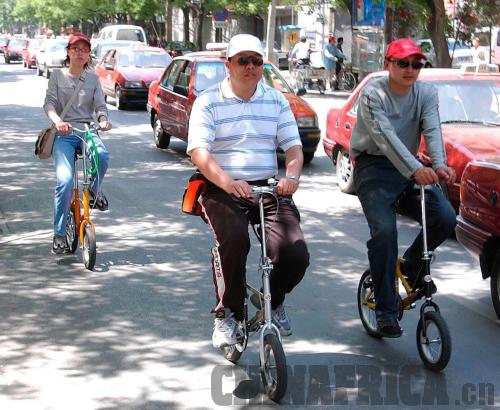|
 |
|
Lingjing Hutong (XING GUANGLI) |
Outside Lingjing Hutong station on Beijing's Subway Line 4, the 664-meter-long Lingjing Hutong between Fuyoujie Street and Xidan North Street spreads out 32.18 meters at its widest point. It's the widest hutong in the capital.
Before an expansion in the 1980s, Lingjing was just 3 meters wide. Its history can be traced back to the Ming Dynasty (1368-1644), when a Taoist temple known as Lingji Palace was built there in 1471. It's said that the palace was constructed on the orders of Emperor Yongle, a man whose legend precedes him.
When the emperor ascended to the throne, he moved China's capital to Beijing. In his new locale, he fell ill. Deeply sick, he dreamt that two immortal beings had sent him a cure to save his life. Upon waking, he discovered he had fully recovered from his ailment. He was so pleased that he ordered the building of Lingji Palace to worship the figures from his dream.
From then on, at each and every Chinese Spring Festival, winter solstice and other festivals, emperors sent officials to the palace to pray and give thanks to the two immortals. This lasted until the Qing Dynasty (1644-1911) when, after many years of disrepair, the palace collapsed completely.
In its Ming Dynasty heyday, Lingjing was divided into two parts. Its present-day name came about during the Qing Dynasty, when the lane's eastern part began to be referred to as Lingjing Hutong by locals in the area. The western part was renamed Ximi Hutong. The whole complex was united under the name of Lingjing in 1949. After such a long passage of time, the alley fully embraced its palatial history.
Today, the hutong has been marked by much change. Rows of residential buildings now line both sides of the street. The originally-narrow lane has widened 10-fold. Its ancient architecture is gone.
While visiting the hutong, try the tasty Mongolian hot-pot at Donglaishun Restaurant, (No. 23) one of Beijing's oldest Chinese Muslim restaurants opened in 1903. As one of the oldest and the most famous hot-pot chains, it serves instant-boiled mutton as its specialty. The mutton here is quite different from other places as the restaurant uses only high-grade lamb, something much appreciated by diners judging by full tables on any given day. The melt-in-your-mouth boiled mutton method of cooking has been perfected over time to produce a flavor so unique, patrons travel from across China to sample it.
Further up the street at No. 95, settle in to sample Tan Family Cuisine at Wufulou Restaurant. Here they specialize in letting the food's natural flavor do the talking, and little if no seasoning is added to the wide range of dishes. This method of cooking is traditionally Beijing based, and guarantees no extremes in flavors, which makes it suitable for all tastes.
Not far from the street's eastern exit, the Post-80s Theme Restaurant attracts young people with a nostalgic bent. Only those born between 1980 and 1989 may enter (ID is mandatory). The dining room, decked out as a classroom with old textbooks, cartoons and celebrity photos on display, keeps the youngsters busy over searing hot-pot and other delicious Beijing cuisine.
Hutong Tips
How to get there
> By subway: Take Subway Line 4 to Lingjing Hutong Station, get out from Exit C and walk southward to find the entrance to Lingjing Hutong.
> By bus: Take bus 22, 105, 604 and get off at Ganshiqiao Station. Alternatively, take bus 68 and get off at Lingjing Hutong Station. Another option is to take bus 38, 46 and get off at Picai Hutong Dongkou, and then go to the opposite side of the crossing.
What to see
> A must-see place while visiting Lingjing Hutong is Beijing Zhongshan Park, located not far from the eastern end of the alley. As a grand example of classical Chinese landscape gardening, the park houses numerous pavilions, gardens and imperial temples like the Altar of Earth and Harvests. It's also famous for its ancient cypress trees, some of which are over 1,000 years old. The park also features a concert hall, a large pond and colorful long corridor.
> Ticket price: 3 yuan
> Website: www.zhongshan-park.cn |